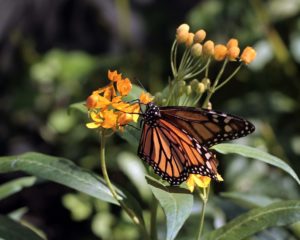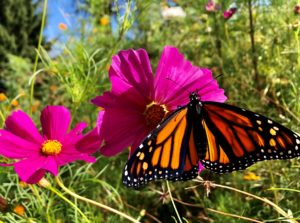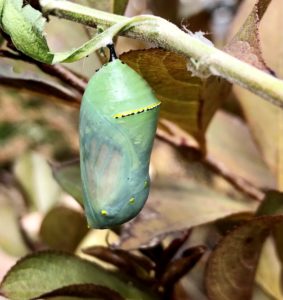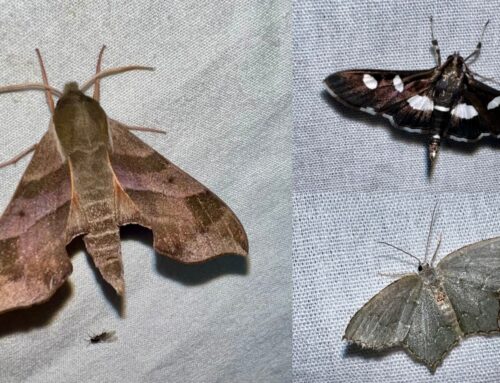What is it about the monarch butterfly that fascinates so many people? The answer likely lies in the annual autumn migration that has been ongoing for millennia. Monarchs fly from as far north as Canada to a forest in Central Mexico each fall. While it would be amazing for a butterfly to migrate up to 3,000 miles back to where it spent the previous winter, it’s far more amazing that the monarchs who migrate are 4-5 generations removed from their ancestors who made this dangerous journey the year before. In early spring, these same monarchs who flew south the previous year begin their journey back to the lower states. This first generation will start the journey, laying their eggs before they die so that their children and grandchildren may continue the trek back to the furthest reaches of their native range.

Monarchs, and their great migration, face a tenuous future. Their populations continue to plummet. The monarchs living east of the Rocky Mountains have declined by over 80-90% since the 1990’s. The western monarchs overwinter in coastal California and have declined by 99%. According to the Center for Biological Diversity, “the numbers are now well below the threshold at which government scientists predict the migration could collapse”
The story of how the monarchs came to be in this position is a familiar one, and shared by many populations of butterflies, bees, other insects and even birds. Pesticides, land development and a changing climate have had a tremendous effect on so many creatures. These are all complex topics and none can be easily resolved. If you are old enough, you will remember your heavily smudged car windshield, covered in many different species of insects, after a summer drive. How long has it been since you had this ‘problem’?

It is reported that 165 million acres of milkweed have been destroyed due to pesticide intensive-agriculture and land development. The monarchs are showing us what has been done to their populations. Are we willing to let it continue? Can we make the necessary changes to save them, and other creatures?
In 2014, the Center for Biological Diversity and its allies petitioned to have the monarch declared as ‘threatened’ under the Endangered Species Act. A determination on whether such a listing is warranted is due to be announced by December 15, 2020. If it is decided to declare the monarch a ‘threatened’ species, we could see large effects on pesticide registration and usage, changes to agricultural practices, and an impact on the scope of what organizations and individuals can do to help support this species. Raising monarchs in the butterfly house at Tyler might be a thing of the past. But the trade off would be increases in protections for this incredible butterfly.
Perhaps because we have all enjoyed their annual visits, the plight of the monarch feels a bit closer to many of us. While we know many species are declared threatened or even endangered, monarchs are a species we depend on seeing and enjoying each summer. This monarch chrysalis seems to be a symbol of hope for its future. The miracle of metamorphosis is coming to completion as the wings are clearly visible. This pupa is nearly ready to continue its life as a butterfly.

This is a story with many different and important facets. With the potential of huge changes, here are a few links to help you gain a better understanding of what may be ahead by the end of 2020.
Here you will find a summary of the current situation provided by the Center for Biological Diversity.
Here you can find the 2014 petition to protect the monarch butterfly under the Endangered Species Act.
Here you can find the 2020 Nationwide Candidate Conservation Agreement which is a formal, voluntary agreement between the Service and landowners to conserve habitats that benefit at-risk species.






